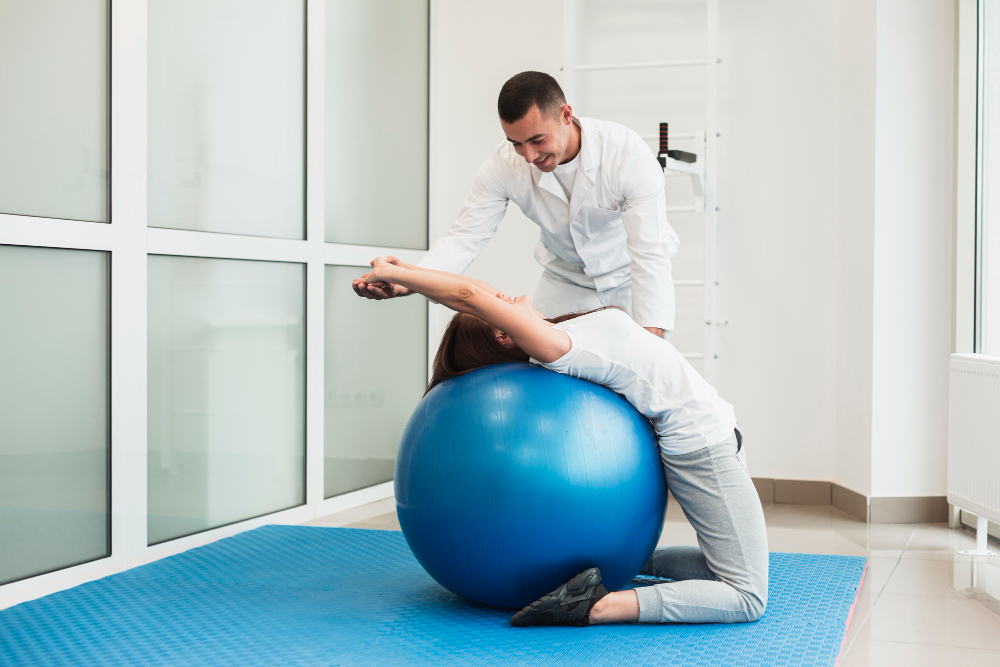How Using Unstable Surfaces Can Enhance Scapular Stability

The scapula, or shoulder blade, is a crucial component of the shoulder joint. Its role is to provide movement and support for the upper arm bone or humerus. However, many people, particularly athletes, suffer from scapular instability that can result in shoulder pain, decreased mobility, and poor performance. Fortunately, there are various ways to strengthen and stabilize the scapula, and one effective method is using unstable surfaces. In this blog post, we'll discuss how using unstable surfaces can enhance scapular stability and why it's important for shoulder health.
1. Understanding scapular stability and instability
Scapular instability occurs when the shoulder blade moves excessively or abnormally, interfering with proper joint mechanics and muscle function. This can be caused by several factors, such as poor posture, muscle imbalances, overuse, or trauma. Scapular instability can result in various symptoms, including pain, weakness, stiffness, and decreased range of motion. On the other hand, scapular stability refers to the ability of the shoulder blade to maintain its position and movement during different activities. Scapular stability relies on the coordination and activation of several muscles, such as the rotator cuff, serratus anterior, and trapezius. Strengthening and stabilizing these muscles can improve scapular stability and prevent injuries.
2. Benefits of using unstable surfaces
Using unstable surfaces, such as exercise balls, foam rollers, or balance pads, can challenge the muscles involved in scapular stability by creating a variable and dynamic environment. When you perform exercises on unstable surfaces, your muscles have to work harder to maintain balance and control, which can enhance their activation and strength. Furthermore, using unstable surfaces can improve your proprioception, or your sense of body awareness and position, which is essential for proper movement and coordination. By improving proprioception, you can also reduce the risk of falls or injuries in everyday activities.
3. Examples of exercises using unstable surfaces
There are many exercises that you can perform using unstable surfaces to improve scapular stability. Here are a few examples:
- Push-ups on a stability ball
This exercise targets the chest, shoulders, and triceps, as well as the scapular stabilizing muscles. Place your hands on the ball and your feet on the floor, with your body in a plank position. Lower your chest towards the ball, keeping your elbows close to your body, then push back up to the starting position. Repeat for several reps.
- Plank with arm lift on a foam roller
This exercise targets the core, shoulders, and scapular stabilizing muscles. Place your forearms on the foam roller and your toes on the floor, with your body in a straight line. Lift one arm off the foam roller and reach it forward, then lower it back down. Alternate arms for several reps.
- Balance lunge with shoulder press on a half-ball
This exercise targets the legs, glutes, shoulders, and scapular stabilizing muscles. Stand on the flat side of the half-ball with one foot, while holding dumbbells at shoulder height. Step back with your other foot and lower into a lunge while pressing the dumbbells overhead, then return to the starting position. Alternate legs for several reps.
4. Precautions and modifications
Using unstable surfaces can be challenging and risky for some individuals, especially those with balance or joint issues. Therefore, it's essential to take some precautions and modifications to ensure safety and effectiveness. Here are some tips:
- Start with simple and stable exercises before progressing to more complex ones.
- Use proper form and technique to avoid compensations or injuries.
- Use a spotter or a stable surface nearby if needed.
- Choose an appropriate level of instability for your fitness level and goals.
- Listen to your body and stop if you experience pain or discomfort.
Conclusion
In summary, using unstable surfaces can be a useful strategy to enhance scapular stability and promote shoulder health. By challenging your muscles in a dynamic and variable environment, you can improve their activation, strength, and proprioception, which are essential for proper scapular mechanics and movement. However, it's crucial to take precautions and modifications to avoid risks and ensure safety and effectiveness. If you're looking for Physiotherapy in Oviedo, FL, contact B Physical Therapy today to schedule an appointment and learn more about how we can help you with your scapular stability and other musculoskeletal issues.